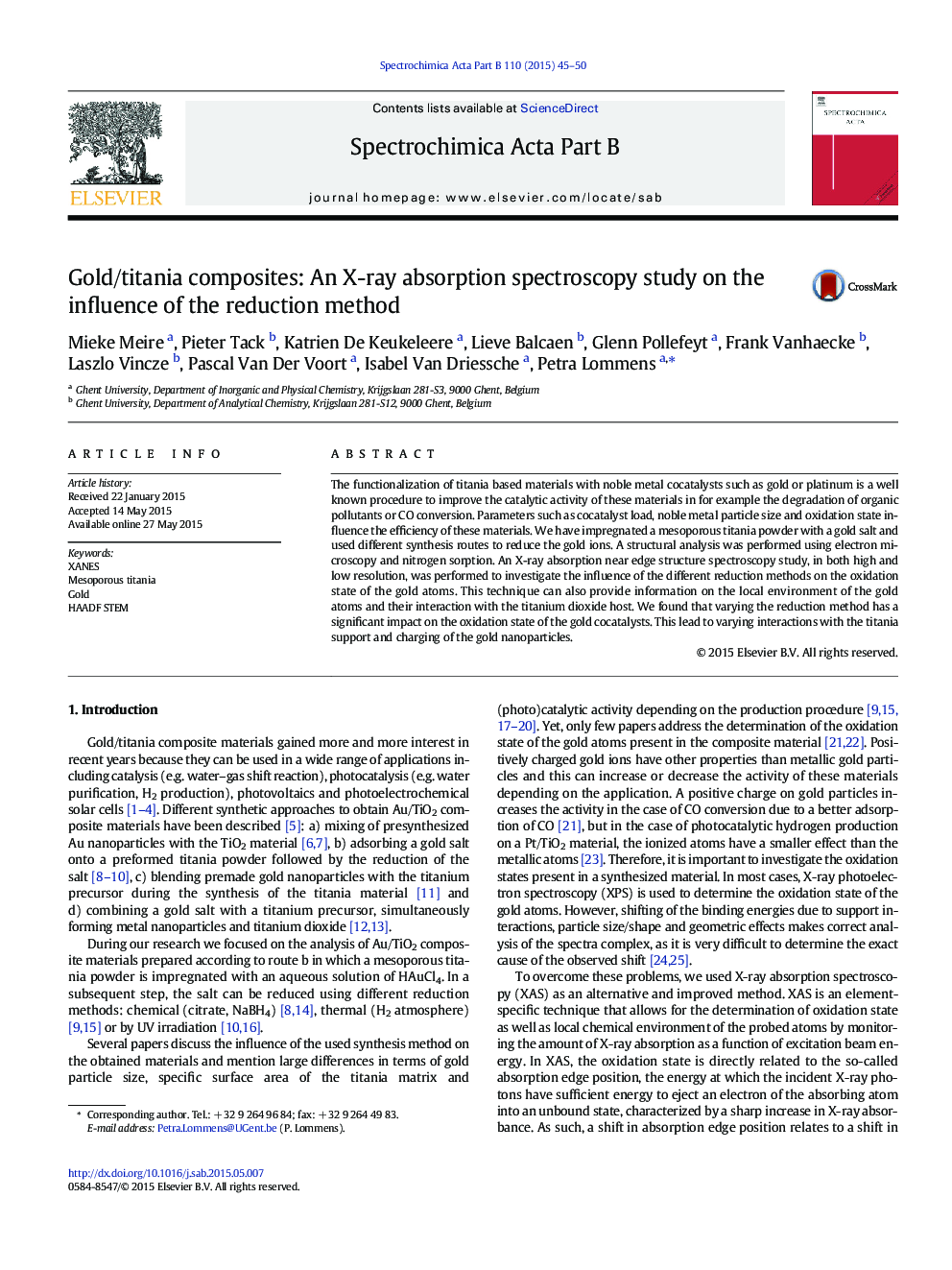| Article ID | Journal | Published Year | Pages | File Type |
|---|---|---|---|---|
| 1239976 | Spectrochimica Acta Part B: Atomic Spectroscopy | 2015 | 6 Pages |
•Influence of reduction method on Au/TiO2 was studied.•Hydrogen reduction of gold salt results in the smallest particles of 2.4 nm.•XANES is used to determine the oxidation state of gold atoms.•Hydrogen and microwave synthesis produce completely reduced gold particles.•UV reduction of gold salt leads to positively charged particles.
The functionalization of titania based materials with noble metal cocatalysts such as gold or platinum is a well known procedure to improve the catalytic activity of these materials in for example the degradation of organic pollutants or CO conversion. Parameters such as cocatalyst load, noble metal particle size and oxidation state influence the efficiency of these materials. We have impregnated a mesoporous titania powder with a gold salt and used different synthesis routes to reduce the gold ions. A structural analysis was performed using electron microscopy and nitrogen sorption. An X-ray absorption near edge structure spectroscopy study, in both high and low resolution, was performed to investigate the influence of the different reduction methods on the oxidation state of the gold atoms. This technique can also provide information on the local environment of the gold atoms and their interaction with the titanium dioxide host. We found that varying the reduction method has a significant impact on the oxidation state of the gold cocatalysts. This lead to varying interactions with the titania support and charging of the gold nanoparticles.
